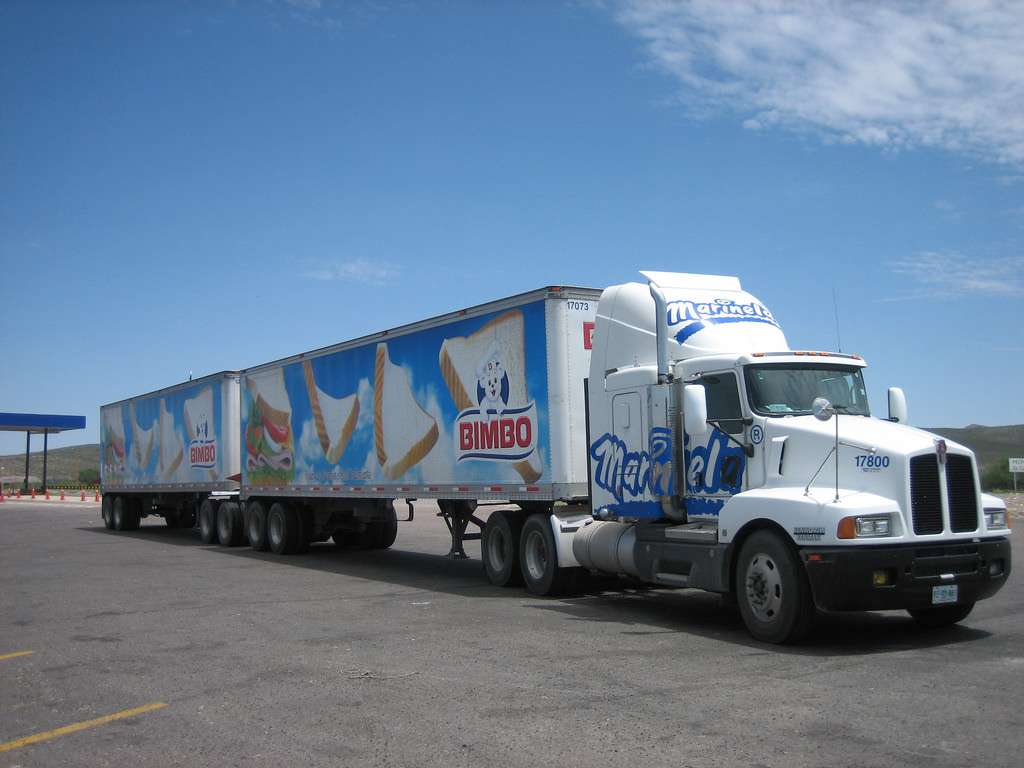Highwayman
Well-Known Member
Must be hard to get that in the building for a breakdown.


Must be hard to get that in the building for a breakdown.
You do have a way with words.Wind+black ice+ doubles/triples= puckered sphincter

did u just find out about triples or what? i dont understand
theres a reason its called the doubles/triples endorsement
how bout this for a set of doubles

and australia is crazy
Nothin' wrong with having a pair of bimbos following you!
Its in the ice storms when you come up on a set of taillights in front of you and find it is your kite!
I'm not a feeder so I'm asking this question. In the pics in this thread it looks like when pulling doubles you can attach a 40 footer to a 53 footer. Are there laws prohibiting pulling 2 -53 footers?
The United States also allows 2-axle tractors to tow two 1-axle 28.5-foot (8.7 m) semi-trailers known officially as STAA doubles and colloquially as doubles, a set, or a set of joints on all highways that are part of the National Network. The second trailer in a set of doubles uses a converter gear, also known as a con-gear or dolly. This apparatus supports the front half of the second trailer. Individual states may further allow longer vehicles (known as "longer combination vehicles" or LCVs), and may allow them to operate on roads other than those part of the National Network.
LCV types include:
Regulations on LCVs vary widely from state to state. No state allows more than three trailers without a special permit. Reasons for limiting the legal trailer configurations include both safety concerns and the impracticality of designing and constructing roads that can accommodate the larger wheelbase of these vehicles and the larger minimum turning radii associated with them.
- Triples: Three 28.5-foot (8.7 m) trailers; maximum weight up to 129,000 pounds (58.5 t).
- Turnpike Doubles: Two 48-foot (14.6 m) trailers; maximum weight up to 147,000 pounds (66.7 t)
- Rocky Mountain Doubles: One 40 (12.2 m) to 53 (16.2 m) foot trailer (though usually no more than 48 feet) and one 28.5-foot (8.7 m) trailer (known as a "pup"); maximum weight up to 129,000 pounds (58.5 t)
- In Canada, a Turnpike Double is two 53-foot trailers and a Rocky Mountain Double is a 50-foot trailer with 24-foot "pup"
Most states restrict operation of larger tandem trailer setups such as triple units, the "Turnpike Double" (twin 48-53 ft units) or the "Rocky Mountain Double." (A full 48-53 ft unit and a shorter 28 ft unit) In general, these types of setups are restricted to tolled turnpikes such as I-80 through Ohio and Indiana, and select Western states. Tandem setups are not restricted to certain roads any more than a single setup. The exception are the units listed above. They are also not restricted because of weather or "difficulty" of operation.
I believe Kansas allows turnpike doubles also and maybe Pa.
